Some hibernators can go up to 10 minutes without taking a breath. An impressive feat considering humans can only hold their breath for about two minutes. And true hibernators sleep so deeply they appear dead. But don’t worry; these resting creatures are very much alive.
During hibernation, physiological functions slow down or halt entirely. Brain activity becomes undetectable as animals conserve energy to survive until better conditions arise.
Learning about hibernation is a game changer. The science could help uncover new medical treatments for metabolic disorders. It might even prove helpful with things like space travel and cryopreservation. Plus, learning about the different species that hibernate helps us protect them and their environments. When we know where a certain animal goes during the winter, we can be more careful to not disturb them.
What animals survive by entering into a state of hibernation? Read on to find out!
What Is Hibernation?
Hibernation is a fascinating survival technique certain animals use to conserve energy and endure harsh environmental conditions. While it’s a lot like sleep, it’s also completely different.
While sleeping, the body is still fairly active. But hibernation is a state of inactivity. Animals slow their heart rates, breathing, and body temperature to save energy. This process is crucial for animals that live in regions with long, cold winters or experience food scarcity.
Before hibernation, animals must consume significant food to build up body fat, sustaining them throughout winter. Like the arctic fox, certain species also prepare by growing an extra thick fur coat.
What Happens During Hibernation?

Bears are super hibernators, able to remain inactive for up to 100 days without arousal.
©Ghost Bear/Shutterstock.com
During hibernation, brain activity becomes undetectable, and most physiological functions slow down or stop altogether. However, hibernators must undergo periodic arousals to catch some sleep and maintain their bodily functions. As super hibernators, bears can go 100 days without periodic arousal.
Here are five things that happen during hibernation:
- Metabolism slows down: The metabolic rate of animals during hibernation drops to as low as 5% of their normal rate.
- Body temperature drops: The body temperature of hibernating animals decreases significantly.
- Heart rate decreases: Hibernating animals experience a decrease in heart rate, with some animals’ heart rate dropping to as low as 5 beats per minute.
- Breathing rate decreases: Hibernating animals’ breathing rate also decreases significantly.
- Energy conservation: During hibernation, animals save energy by slowing down their body functions and reducing movement. This makes it possible to survive harsh environmental conditions and food scarcity.
The time of year an animal goes into hibernation depends on its species and the current temperatures. Some animals only hibernate for a few weeks, while other true hibernators rest for moths.
List of Animals That Hibernate
How many animals hibernate? A lot of them! There are over 8 million animal species worldwide, and many survive by hibernating. It’d take too long to review every animal that hibernates, so we’ve narrowed it down to a few of the top hibernators.
List of animals that hibernate:
Let’s start with our list of animals that hibernate with one of the true hibernators; groundhogs.
Groundhogs
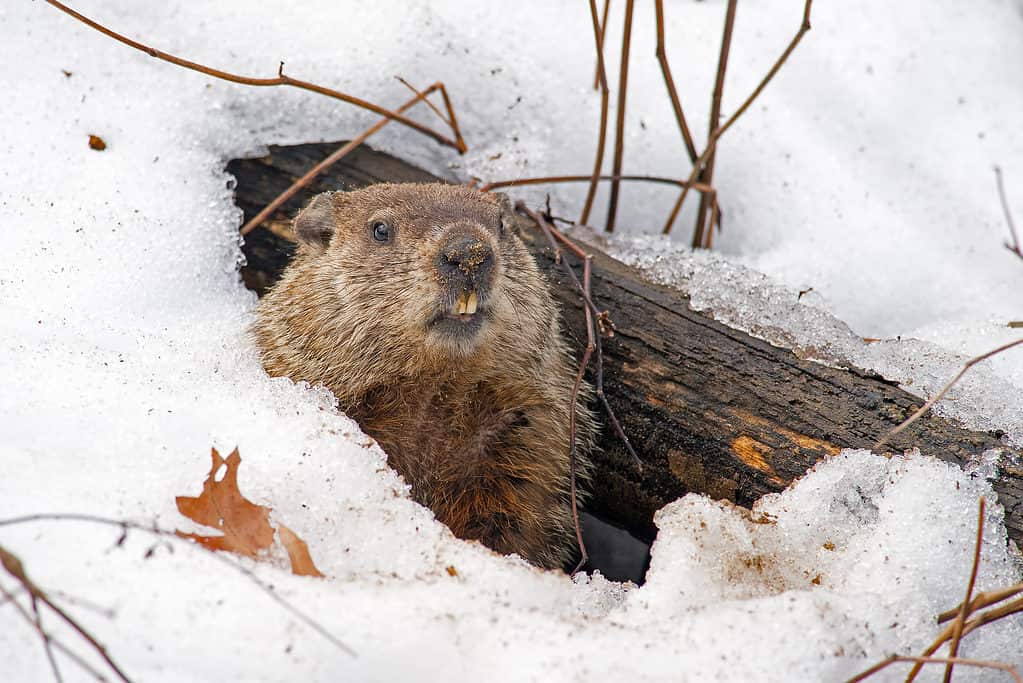
Many animals enter true hibernation during winter to survive the cold. Groundhogs are one such animal.
©Brian E Kushner/Shutterstock.com
Groundhogs, or woodchucks, are burrowing rodents found in North America. Folklore says these critters can predict the arrival of spring. Considered true hibernators, these rodents can stay in a state of deep rest for 150 days.
Groundhogs are herbivores that primarily feed on plants, fruits, and vegetables. These crafty creatures can dig complex burrow systems for shelter and raising their young. During winter months, they hibernate and emerge in early spring.
Ground Squirrels
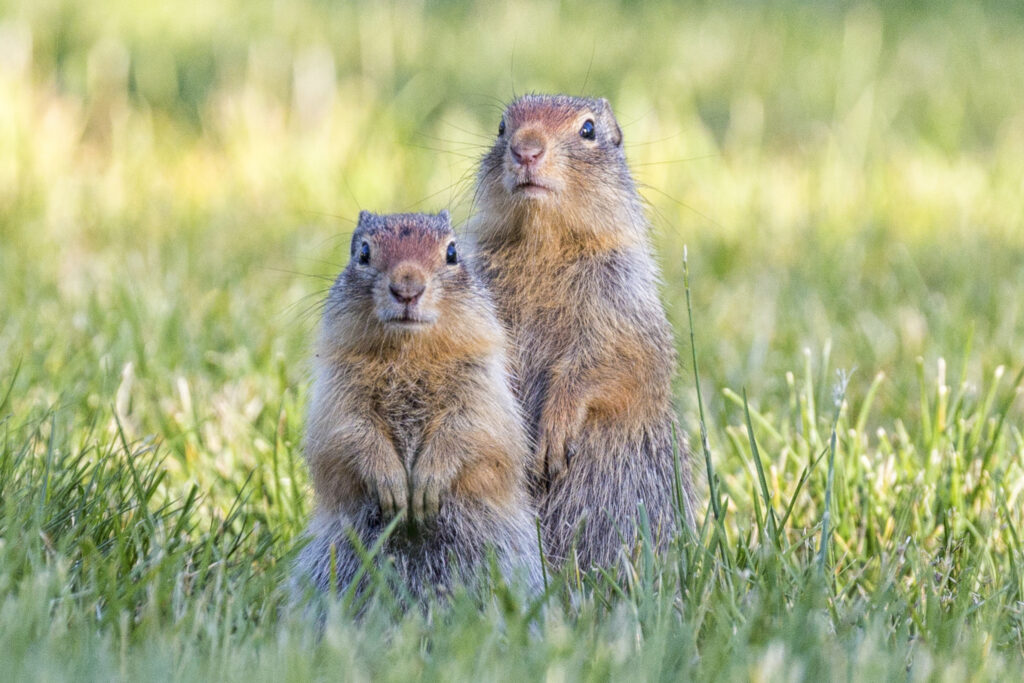
As active and social as they are, ground squirrels hibernate through winter, and they won’t emerge until spring arrives.
©Cora Hiranaka/Shutterstock.com
Ground squirrels are the social butterflies of the rodent world. These tiny creatures live all over North America and Eurasia and are known for their active daytime lifestyle. They feast on delicious foods like nuts, seeds, fruits, and insects. When the winter chill arrives, ground squirrels cozy up. These mammals will hibernate until spring arrives.
Bats
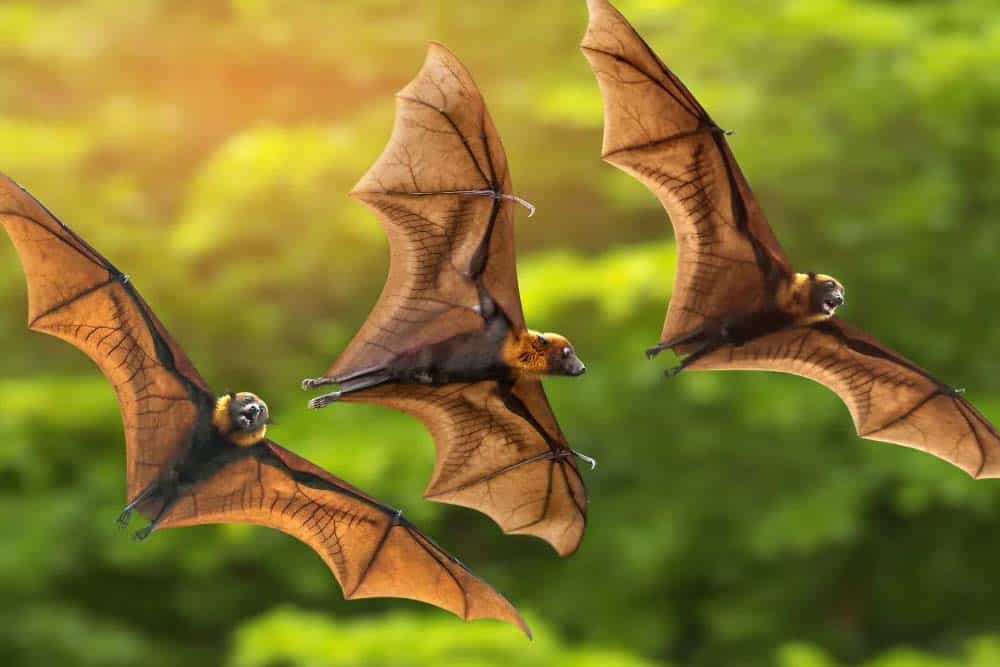
While some bats hibernate during the winter, others migrate to warmer areas.
©Independent birds/Shutterstock.com
Living mysteries, bats have captured the human imagination for centuries. These mammals exist everywhere except in extreme polar regions and some islands. Despite being nocturnal, bats are skilled navigators, using echolocation to locate prey and avoid obstacles. They have a diverse diet, ranging from insects and fruits to nectar and blood. During the winter months, some bats hibernate to survive the cold weather, while others migrate to warmer areas.
Salamanders
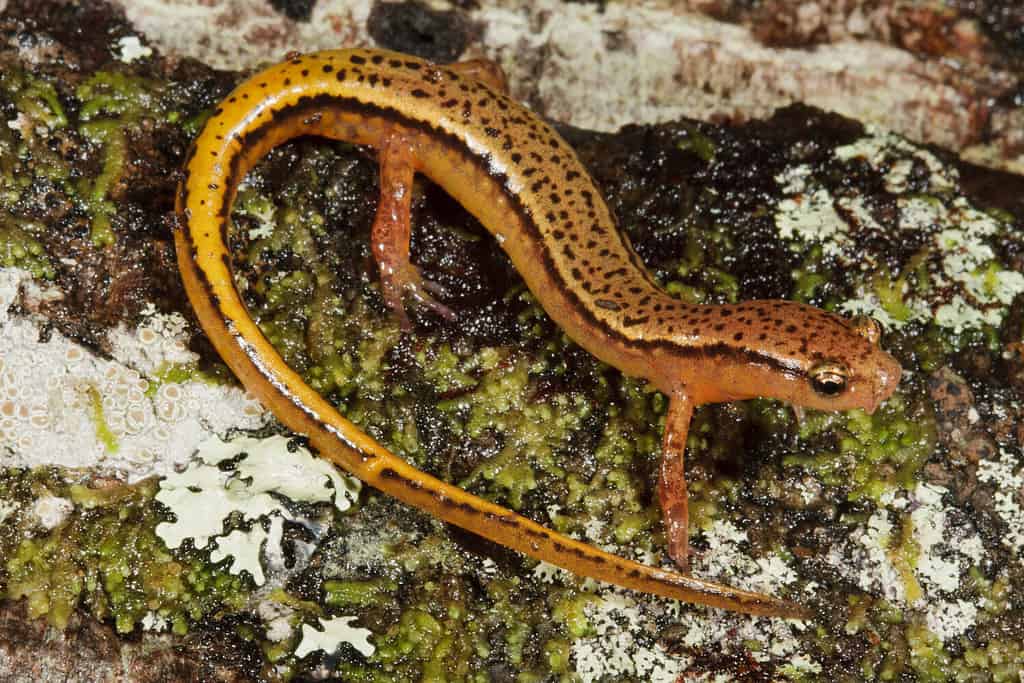
Seeking refuge in the crevices of rocks, salamanders hibernate during winter.
©Nathan A Shepard/Shutterstock.com
Salamanders are amphibians that are well-adapted to survive cold weather. This species lives in various parts of the world. They have smooth, moist skin and are popular for their ability to breathe through their skin and lungs. They also have the remarkable ability to regenerate lost body parts, including limbs and tails. This comes in handy when evading predators.
In terms of their diet, salamanders typically feed on insects, small animals, and even other salamanders. During the winter, these lizards seek refuge in rock crevices and burrows, where they hibernate.
Hedgehogs
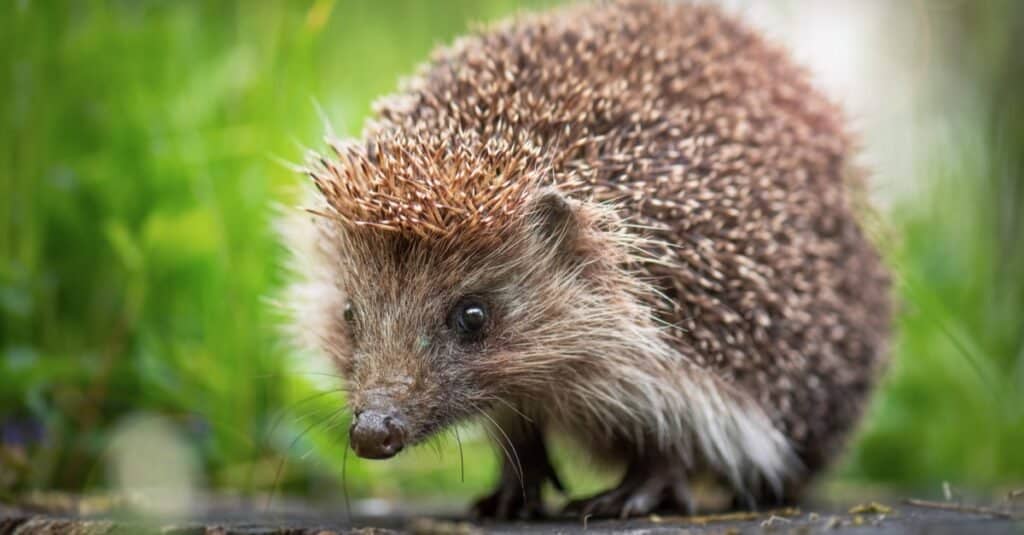
When food sources become scarce during winter, hedgehogs hibernate to conserve energy.
©DenisNata/Shutterstock.com
Famous for their ability to roll up into a ball when threatened, hedgehogs are small animals in Europe, Asia, and Africa. Their ball-rolling technique and spiny coat help protect them from predators.
Hedgehogs are primarily active at night and eat insects, small animals, and plants. But as things cool off, food sources become scarce. During late December through early January, these little guys hibernate to conserve energy and stay warm during cold winter.
Frogs
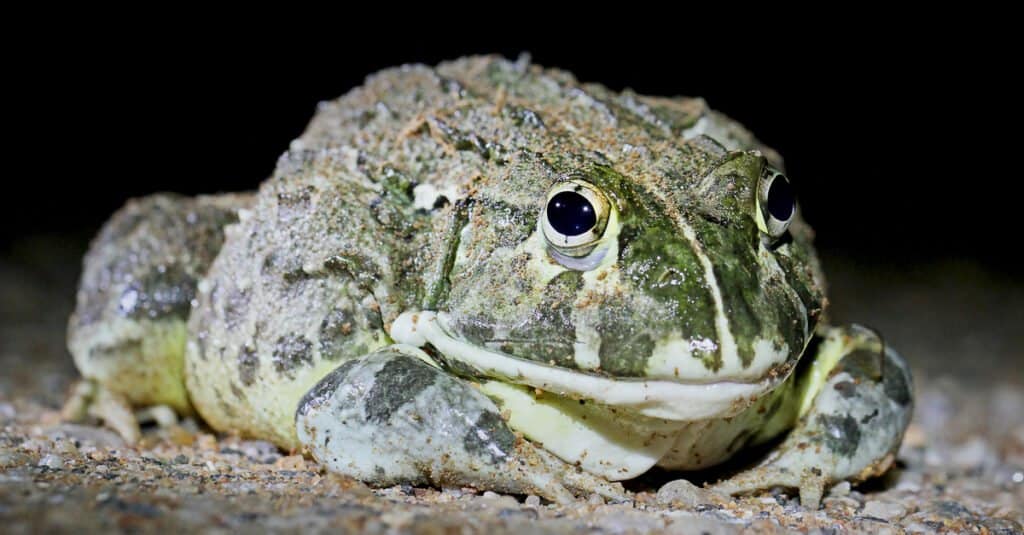
Bullfrogs hibernate by seeking out muddy areas at the bottom of shallow bodies of water, like ponds or lakes.
©Eugene Troskie/Shutterstock.com
During the winter, bullfrogs enter a state of hibernation. They seek out muddy areas at the bottom of bodies of ponds, lakes, and slow-moving streams or rivers to hibernate. This behavior helps protect them from freezing temperatures and the low oxygen levels that the cold weather brings. When the weather warms up, bullfrogs emerge from hibernation and begin their active life cycle again.
Turtles
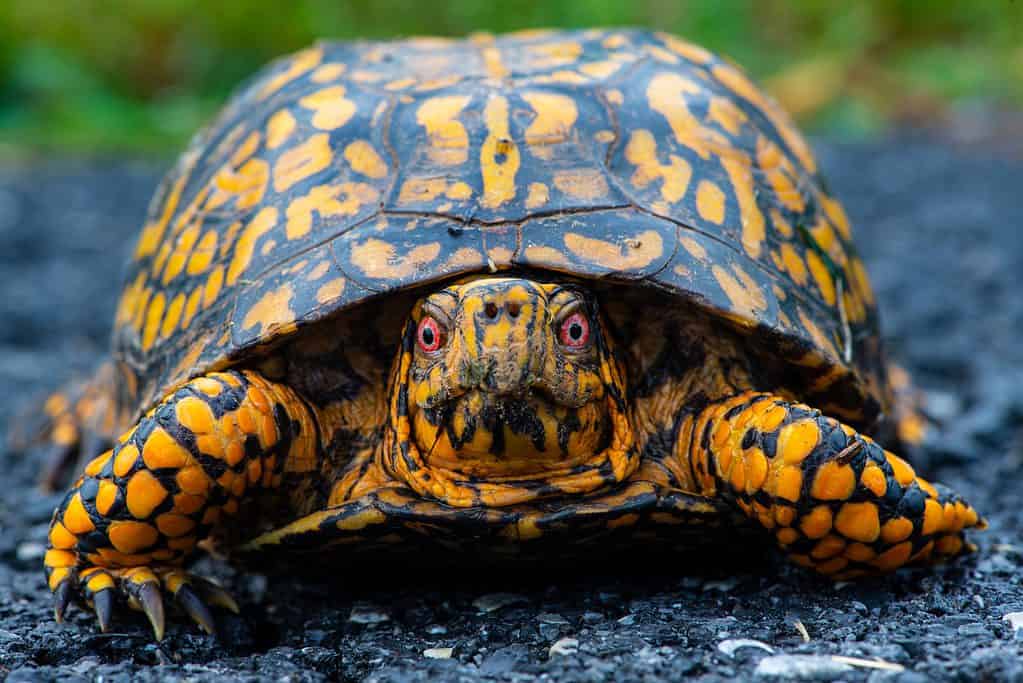
Like bullfrogs, turtles seek mud at the bottom of water when winter arrives.
©RenEgAdeRooStEr/Shutterstock.com
Did you know that some turtle species can live for over 100 years? This makes them some of the longest-living animals on the planet. Their protective shell, made of bone and cartilage, help turtles live in diverse habitats, from freshwater ponds to the vast ocean. As omnivores, turtles eat a combination of plant material and meat. Their food sources include plants, insects, and small animals.
Hibernation isn’t the only thing that helps turtles out. When winter comes, these reptiles rely on “butt-breathing” to survive. Cloacal respiration helps hibernating turtles filter oxygen into red blood cells.
Ladybugs
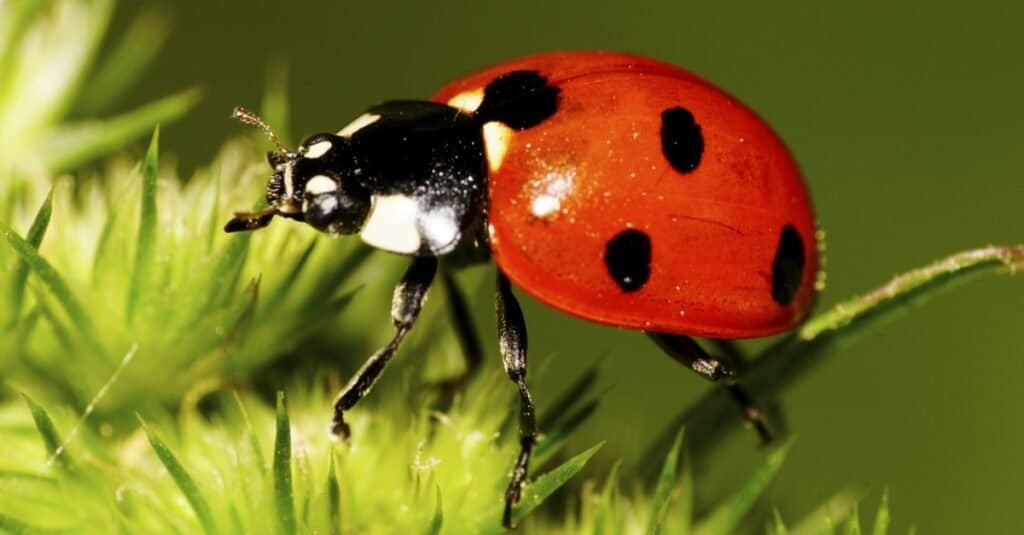
Using diapause, a form of suspended development, ladybugs survive winter months.
© Sergey/Shutterstock.com
Ladybugs rely on diapause, a form of hibernation, to survive the cold weather. These beetles are crucial in controlling pests in gardens and crops. One of a ladybug’s favorite things to eat is a pest called aphids. They also eat other harmful insects.
Ladybugs live for about a year. During this time, they undergo a complete metamorphosis. They start their life cycle as eggs, hatch into larvae, form pupae, and finally emerge as adult beetles. As adults, they mate during the summer. This gives baby ladybugs plenty of time to grow up before winter.
Hibernation Hot Spots: Where Do the Animals Go?
Where do animals go when it’s time to hibernate? Some cozy up in burrows while others go underwater. The location depends on what type of cover is available and the species. That’s why habitat preservation is crucial for biodiversity.
Here are a few hibernation hot spots:
- Burrows
- Dens
- Rock crevices
- Abandoned animal homes
- Under logs
- Buildings
- Bottom of river or pond
- Buried in the dirt
Ground Squirrels hibernate in underground holes or dens, which they dig up to 20 feet deep. And bats hibernate in caves, mines, and other cool, dark places. These spots help keep them safe from predators and disturbances.
Salamanders seek refuge in underground burrows during the winter. Sometimes, they may hide in rock crevices or under logs and leaf piles.
Hedgehogs like to hibernate in cozy nests made of leaves and grass. They usually choose logs or brush to make the nests.
Chipmunks don’t really hibernate, but rather, they enter a state of torpor in underground burrows. The burrows are lined with grass, leaves, and other soft materials.
Some species of frogs hibernate in mud at the bottom of ponds. Others bury themselves in the ground. On the other hand, turtles hibernate underwater, buried in mud at the bottom of ponds or lakes. With certain species seeking shelter in rock piles.
Lady bugs don’t like to hibernate by themselves. Instead, they live out the winter in large groups. Groups of hibernating ladybugs can be found under rocks, in rotting logs, and even inside buildings.
Hibernation and the Predator-Prey Relationship

Studies have shown that hibernation can impact the predator-prey relationship, such as in 2001, when a rise in soybean aphids in Ontario led to a rise in Asian lady beetles.
©iStock.com/DE1967
Hibernation can impact the predator-prey relationship. This was evident about 20 years ago when a rise in aphids lined up perfectly with the ladybug’s hibernation schedule.
In 2001, a rise in soybean aphids throughout Ontario significantly increased the number of Harmonia axyridis beetles, a type of multicolored Asian lady beetle or ladybug. These opportunistic predators follow the path of the biggest food source available. The high aphid populations were able to support the significant increase in the beetle population.
The beetles disappeared when the food source began to decline, and the fall temperatures signaled that it was time for the beetles to enter diapause (hibernate). This is a common phenomenon in nature, where populations of predators and prey rise and fall in response to changes in their environment.
Where Do Frogs Hibernate?
Where do frogs hibernate? Sometimes frogs use rodent burrows to hibernate. Other frogs, like the American bullfrog, rest underwater.
Aquatic Frog
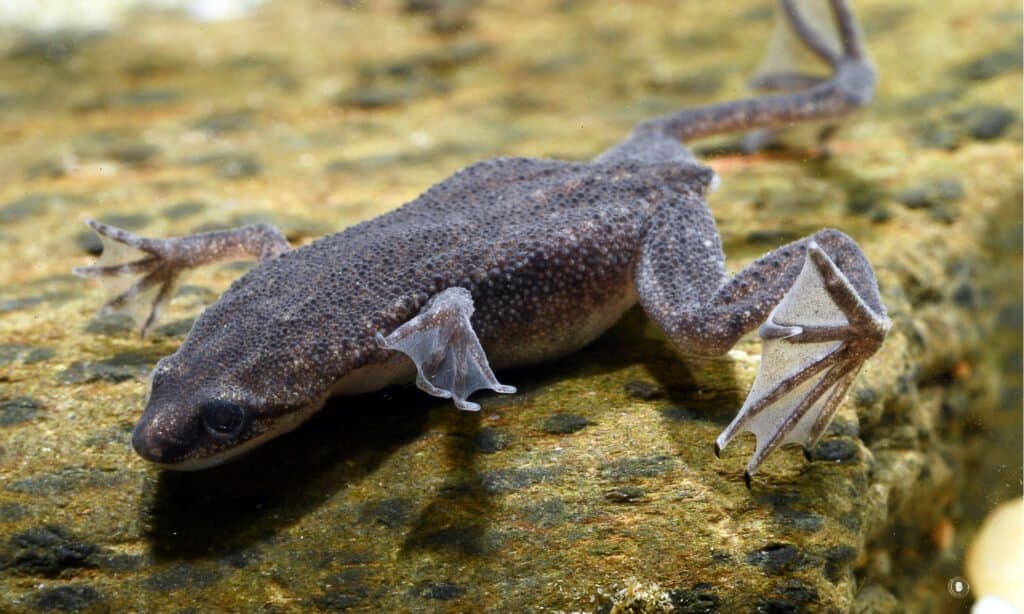
Unlike turtles that bury themselves in mud, aquatic frogs need water that is rich in oxygen for their hibernation.
©Guillermo Guerao Serra/Shutterstock.com
Aquatic frogs cannot hibernate like turtles by burying themselves in mud. Instead, hibernating aquatic frogs need oxygen-rich water. Sometimes these amphibians make the fatal mistake of coming out of hibernation too soon. Winter kill can occur when a frog is lured out of its hibernating spot due to an early warming period followed by a quick freezing drop in temperatures.
Land Frog

For hibernation, barking tree frogs seek deep crevices in logs or rocks.
©iStock.com/JasonOndreicka
Terrestrial frogs hibernate on land. Some frogs, such as the barking tree frog and the mountain chorus frog, seek out deep cracks and crevices in logs or rocks to hibernate. American toads and eastern spadefoots burrow deep into the soil. Once they’re safely below the frost line, they can begin slowing their metabolism.
Animals That Hibernate the Longest
Bears are super hibernators. They can go 100 days without doing anything at all. And while that’s impressive, other hibernating species have bears beat. Here are 3 animals that hibernate for months or years:
1. Snails
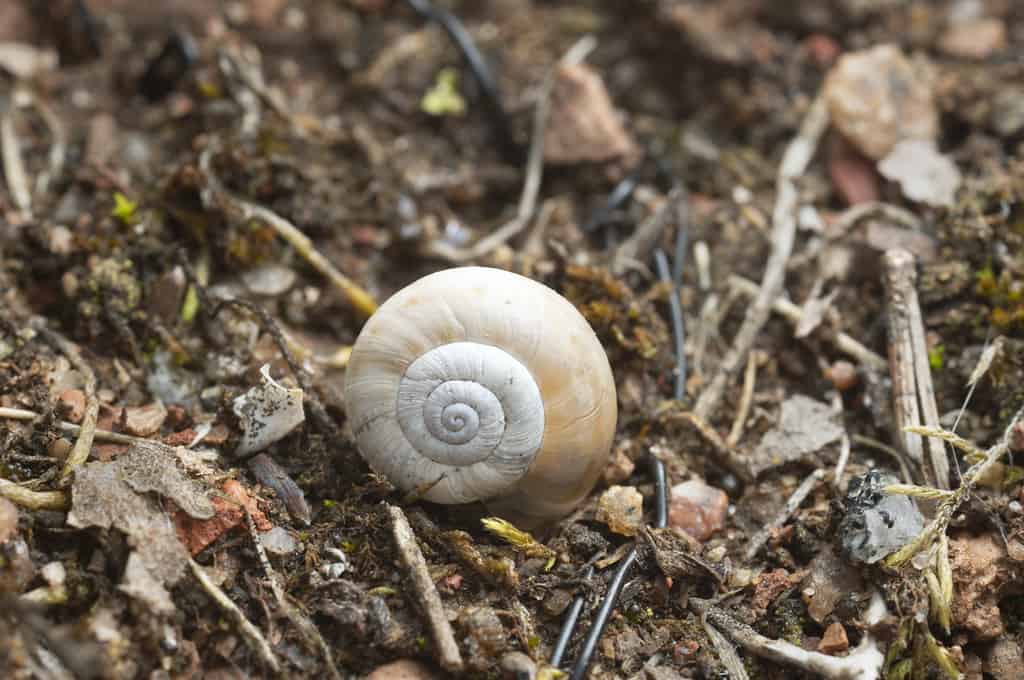
Able to hibernate for up to three years, snails are some of the longest-hibernating animals in the world.
©Henrik Larsson/Shutterstock.com
Snails can hibernate for three years if they have to. Snails are capable of hibernating and aestivating when outside conditions aren’t livable. During hibernation, snails seal the opening of their shells with mucus to maintain moisture and prevent drying out. When things warm up, they’ll break out of their long slumber.
2. Siberian Salamander
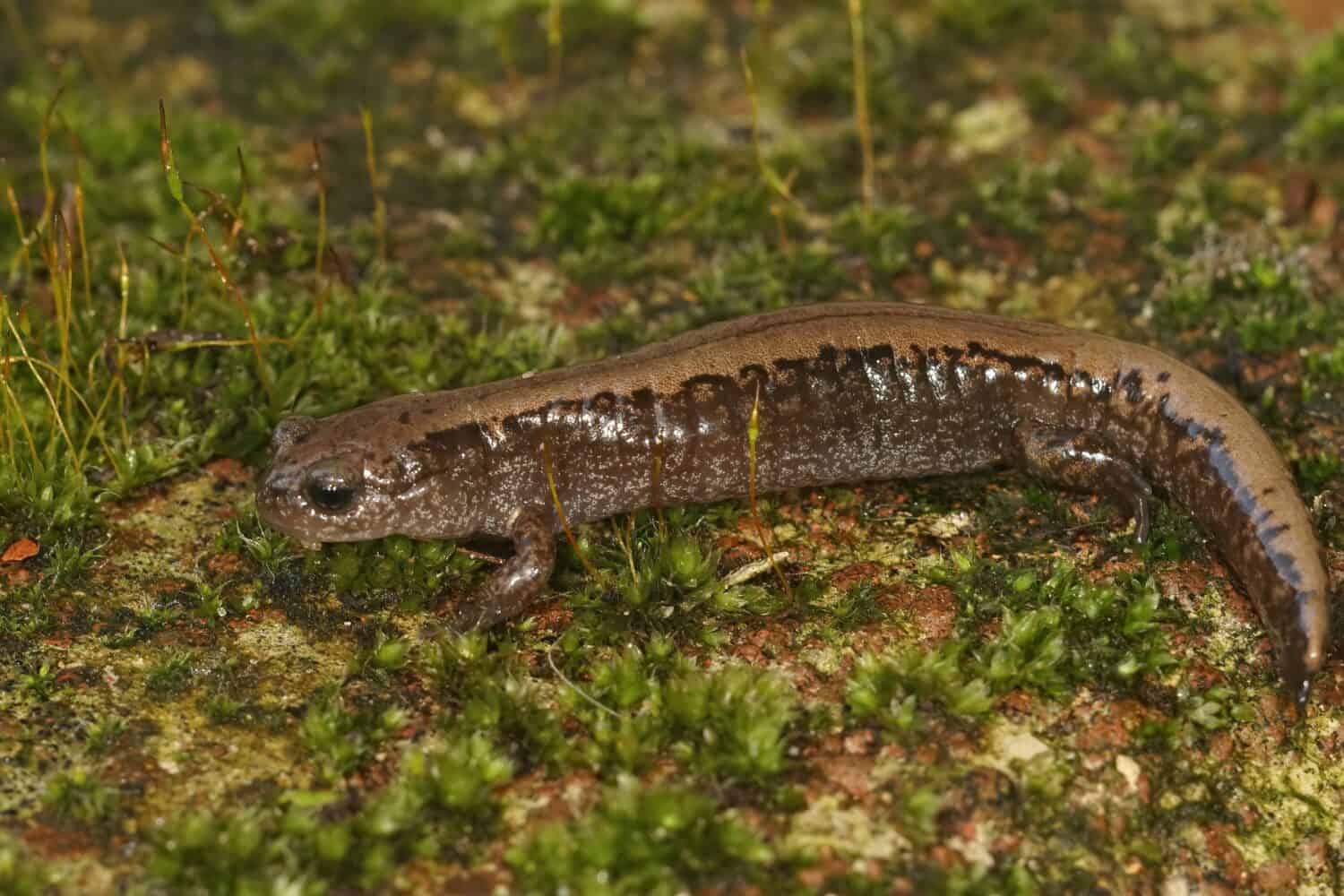
Mating season for
Siberian
salamanders begins when they emerge from hibernation after temperatures rise.
©HWall/Shutterstock.com
Siberian salamanders can hibernate for up to 10 months yearly. This usually happens from October to August. What’s even more impressive is that they can do this while frozen.
Siberian salamanders can survive being frozen for long periods at temperatures of −55 °C. In the spring, when the temperatures rise, and the snow melts, the salamanders emerge from hibernation and begin their mating season.
3. Marmots
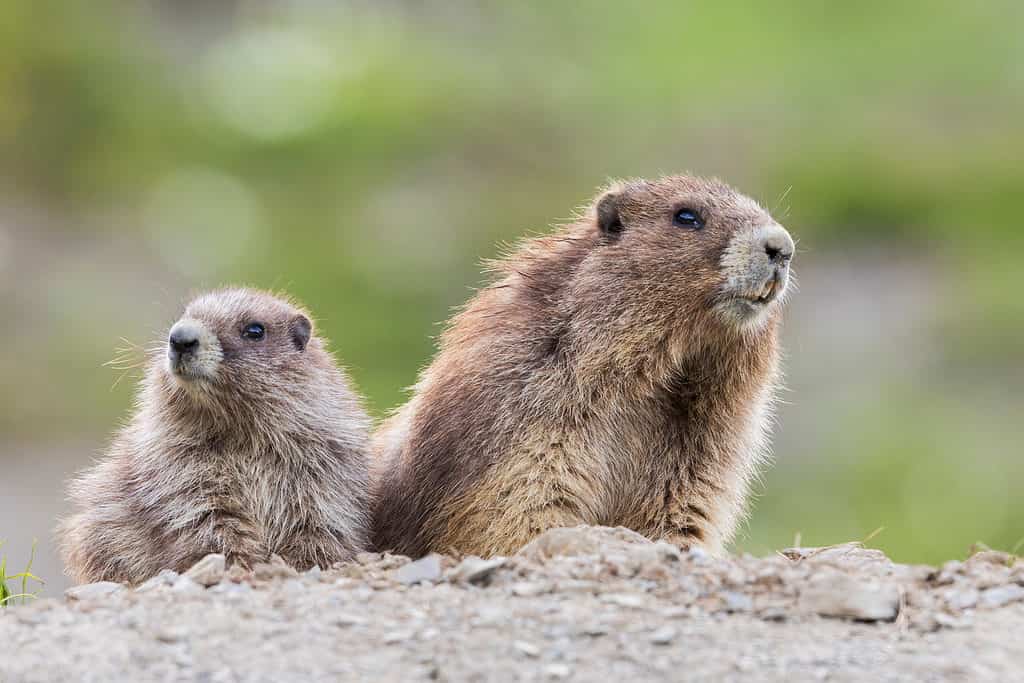
For almost eight months out of the year, marmots hibernate in underground tunnels.
©Danita Delimont/Shutterstock.com
Marmots spend approximately eight months of the year hibernating in underground tunnels. There are 15 species of giant ground squirrels, known as marmots, found in Asia, Europe, and North America. These herbivores can be seen in groups during the summer but not in the winter when they hibernate underground.
Hibernation Alternative: Torpor
Perhaps you heard about the famous hibernating bird, the common poorwill. The tiny bird lives in western North America, often heard calling in the evening and early morning hours. The mysterious bird is gaining recognition for being one of the first known hibernating birds. However, it doesn’t hibernate.
The common poorwill feeds on insects, which it catches on the ground using its small beak and wide mouth. During the cold season, when food supplies dwindle, this bird uses torpor, a hibernation-like state, to conserve energy. Then when things warm up, and more bugs are available, they can resume their active lifestyle.
Torpor

While some mistakenly believe common poorwills hibernate, they actually enter a state of torpor.
©vagabond54/Shutterstock.com
Torpor is where an animal’s body slows down to conserve energy. It’s like a deep sleep, but the animal can wake up quickly. It’s not always cold weather that triggers torpor. Some animals enter torpor during hot weather, food scarcity, or other stressful situations.
During torpor, the specie’s breathing and heart rate slow, and their body temperature drops. This helps them survive until better conditions return.
Some animals, like deer mice, enter torpor instead of hibernation. Sometimes they seek shelter in abandoned bird nests, rock crevices, or under the roots of trees. Many animals, including owls, hawks, and snakes, are preyed upon these tiny rodents, which means they must always be looking for predators. Torpor gives them the ability to react if a threat arises.
Chipmunks are another species that goes into a state of torpor. The temperature and time of year chipmunks enter torpor depends on the species and their environment.
More Hibernation Alternatives: Brumation and Aestivation
Not every species has what it takes to hibernate. Certain animals, like cold-blooded reptiles, rely on their environment to regulate body temperatures. Instead of hibernating, these creatures brumate to survive the cold.
Brumation
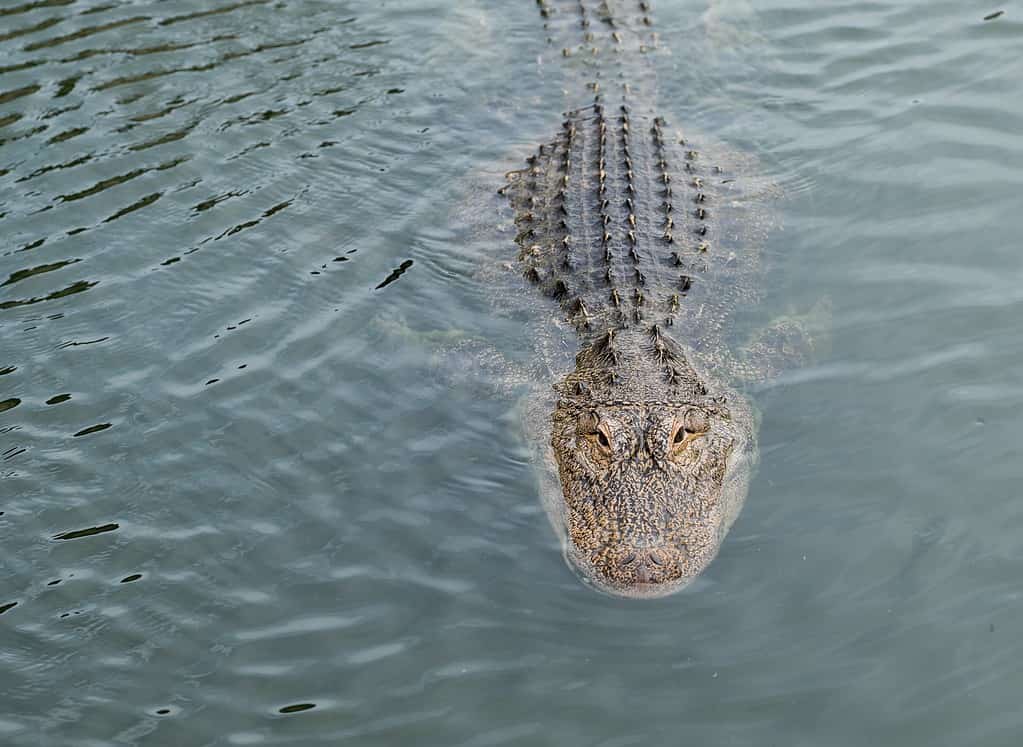
Alligators
brumate during the cold months, but differently from other animals. Alligators go underwater, sticking their nose above the water to breathe, and then they barely move until it warms up.
©David Louis Tiffany/Shutterstock.com
Cold-blooded animals like alligators, snakes, and lizards brumate during the cold season. Brumation is a state of dormancy similar to hibernation, but it affects cold-blooded animals.
The animals’ metabolism slows during brumation, and their heart rate and breathing become slower. However, unlike hibernation, brumation does not involve a deep sleep. The animals can still move around and respond to external stimuli.
Aestivate
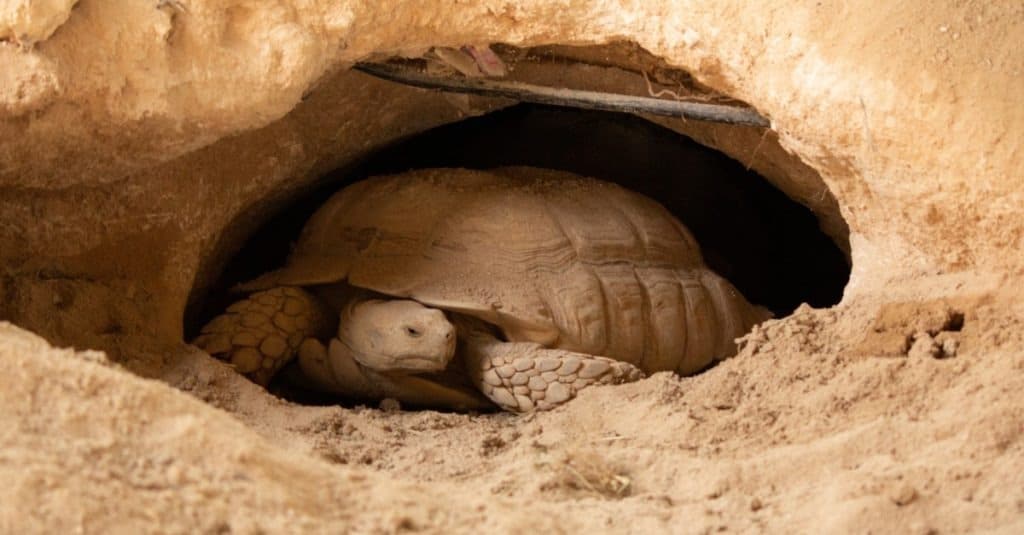
Desert tortoises aestivate, burrowing into shallow depressions to remain cool when it’s too hot outside.
©SLSK Photography/Shutterstock.com
In hot, dry climates, some animals aestivate instead of hibernating. They find cool, safe spots and become inactive for short periods.
Scorching temperatures can be as deadly as freezing ones. Aestivation is a way for animals, like the green-striped burrowing frog and cane toad, to defend themselves from the hot weather. Desert tortoises bury themselves in shallow depressions to keep cool. Others burrow in mud and secrete a cocoon to protect themselves from the heat.
The photo featured at the top of this post is © Paul Knowles/Shutterstock.com
Thank you for reading! Have some feedback for us? Contact the AZ Animals editorial team.






